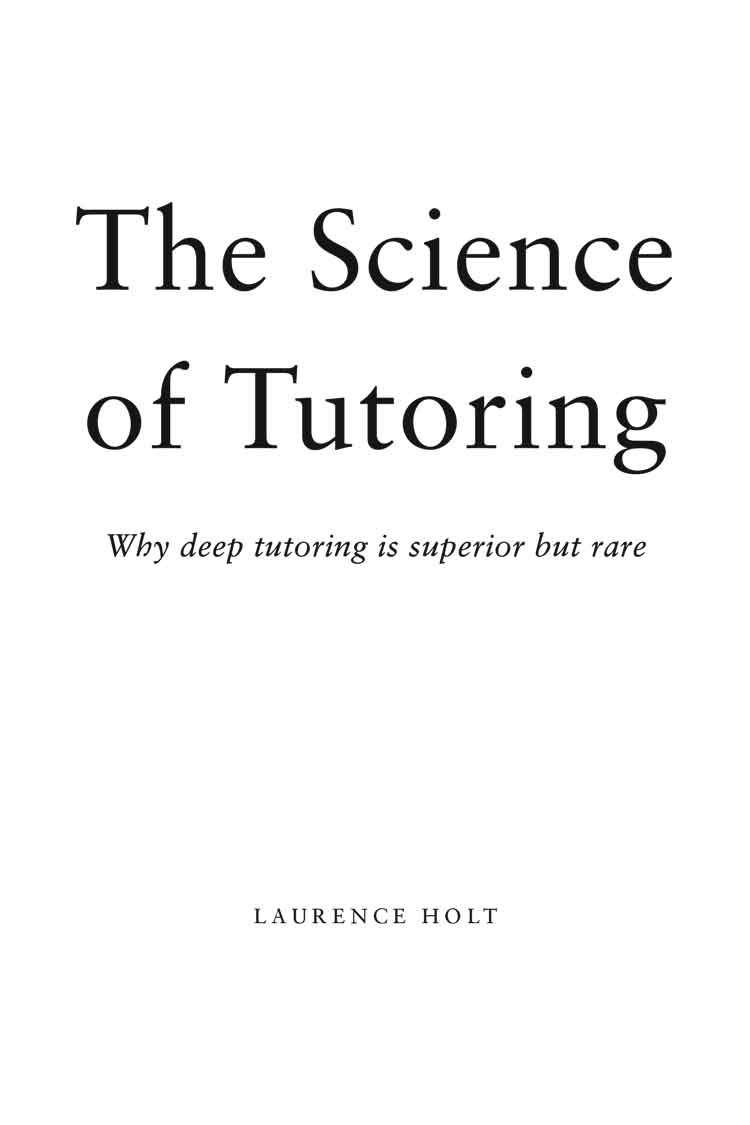6 / checking for understanding
For many years, it was thought that the answer to the mystery of how the earth came to have a moon was that the moon was wandering by and the earth captured it. Subsequent investigation, though, showed that the laws of physics would not allow such a thing. The moon would have been slung out into space, or into the sun 5. Very gradually, the prevailing assumption changed.
Similarly, for many years, the prevailing assumption as to how tutors operate—and the answer to the mystery of why tutoring is so effective—was that, faced with a single student rather than an entire class, the tutor could diagnose their weak spots and address each of them, aligning tutor and tutee orbits so that they would revolve together for a while.
For that to be possible, tutors must continually check a student’s understanding so they can adapt their next move accordingly. But multiple studies have shown that tutors are really not very good at checking for understanding. The prevailing view of how tutoring works is going to have to change.
In particular, tutors do not reliably pick up on a student’s alternative—and perhaps flawed—thinking. Instead, they do what might more accurately be called a “check for correct”: does the student’s answer match that of the tutor? If not, they set about adjusting the student’s approach to match their own. They assume the student’s thinking is uninteresting and discard it.
Again, there is a crucial difference between surface and deep. For example, if my tutor asks me to add 317 and 45 and I write down the numbers left aligned instead of right aligned, a surface assessment would conclude that I have forgotten how to line up numbers when doing addition. A deep assessment might conclude that I don’t understand place value—that addition only works when I add the ones to the ones and the tens to the tens. A tutor making a surface assessment would tell me no more than how to align the numbers. A tutor making a deep assessment would dig further and may wind up changing their plan for the session to teach, instead, a mini lesson on place value.
True checks for understanding are very human acts, like the bus driver who sees you may be having a bad day and holds the doors open versus the robot that closes them in order to stay on schedule. A surface assessment is simple and swift. A deep assessment requires divining the peculiar circumstance that led the student to their answer. It is not just a 2d snapshot of what is presented but adds the dimension of time: how did we get here? Perhaps you don’t understand place value. Or perhaps you do, but you were distracted by thinking about the argument you had with your sister this morning. One is a fundamental misconception that needs to be addressed; the other is just a slip.
Supporting deep learning depends on acts of diagnosis like this. The two diagnoses above call for two very different responses from the tutor, and we don’t know which diagnosis is correct. A follow-up question may be needed to find out. For instance, “In the number fortyfive, what does the four stand for?”
Why do tutors so often skip the diagnosis stage? One reason is that it is difficult to do. The core characteristic of deep learning is that it requires connections between elements of knowledge6. Diagnosing a breakdown in deep learning, then, requires the tutor to ask a question that can only be answered by connecting knowledge. Why is x true? Well, if you put x together with y, you can see that x has to be true. Why did Shakespeare open Hamlet with Barnardo asking the guard “Who goes there?” instead of the other way around? Well, it shows how messed up everything is, even from the first line of the play. Why is your left ventricle more muscular than your right? Well, it has to pump blood all around your body, not just to your lungs. How are fractions like whole numbers? Well, you can add them; in fact, you can do all the same things to fractions that you can do to whole numbers. Which other president is most like Andrew Jackson?
Another reason why tutors don’t do much deep diagnosis is that they typically come to a tutoring session with a plan, some form of “script” such as a series of problems to work through. The very existence of a plan creates pressure to follow it. Stopping to uncover the root cause of a bug in a student’s thinking might feel to the tutor like taking the session off track. If there are multiple students in the session, diagnosing each of their understandings can take a lot of time. Instead of diagnosing, tutors repeatedly cajole students toward their (the tutor’s) own solution pathway for a problem. It’s as if the tutor wants to pick the tutee up and place them at the start of the pathway and then, every time the tutee takes a step off the path, nudge them back onto it.
But this is missing the true value of tutoring. The goal is not covering—moving diligently through a set course of material—but uncovering—creating moments that reveal a student’s thinking and where it can be advanced. Such moments are extremely difficult to pull off in a lesson taught to a whole class. For a student to have taken a leap, stumbled, and betrayed that to their tutor is a rare opportunity indeed, an open-handed gift. Take it. Throw out the script—or at least set it aside for a bit. Show me. Show me how you got to this place in your thinking. Because I don’t care whether you got to the right place this time or not. I care that you learn how to navigate—to get yourself to wherever it is you will need to go.
This moment is something to get excited about.
